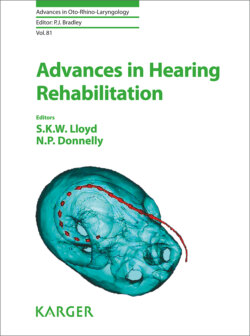Читать книгу Advances in Hearing Rehabilitation - Группа авторов - Страница 19
На сайте Литреса книга снята с продажи.
Clinical Utility
ОглавлениеBilateral congenital deafness can currently be successfully treated by cochlear implantation. This option is, however, not available for children born with bilateral aplasia of the cochlear nerve. For such children, the only remaining functional option is brainstem implantation. The auditory outcomes of brainstem implantation in children with no cochlear nerves are very variable, ranging from no audition to open-set speech discrimination [7, 8]. The reasons for this huge variability in obtained results are not very well understood. One of the potential explanations could be concomitant under-development of aberrantly located cochlear nuclei away from the lateral recess of the 4th ventricle where the brainstem implant electrode is being placed.
Fig. 6. Visualization of the cochlear nuclei on an axial m-FFE image: Short white arrows show bilaterally normal ventral and dorsal cochlear nuclei visible as light grey structures on the dark grey background of the myelinated inferior cerebellar pedunculus (ICP). Dark myelinated pyramidal tracts (PT) are also visible in the brainstem.
Application of the mFFE sequence for the visualization of the cochlear nuclei does, however, have its limitations which are related to the age of the child. Myelinization of the brainstem structures surrounding the cochlear nuclei has to be sufficient to enable visualization of these auditory nuclei. This is usually only the case at the age of 2 years.
Fig. 7. X-ray micro-CT (a), histological image of the human cochlea (b): (a) shows an X-ray micro-CT investigation (Skyscan-1076 scanner) of the cochlea with 18 micron pixel size and Ti-filter. On (b), corresponding histological section of the human cochlea is shown.
